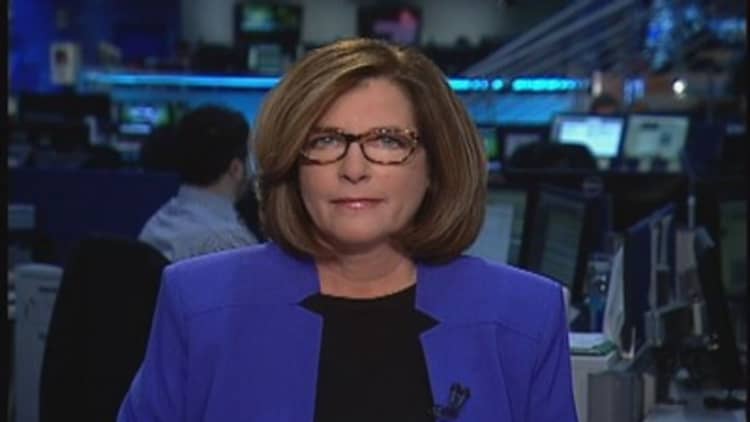
Even as stocks exit 2013 at record levels and with stellar gains, it is likely the "January effect" will help spur further advances.
The was up nearly 30 percent for 2013, its best yearly performance since 1997, and traders expect to see stocks get a lift in early January as investors reposition.
"It's the idea that new money comes into the market, investors see a big up year and it gets people excited," said Paul Hickey, co-founder of Bespoke.
"January has historically been a really good month for the market, but in more recent years it hasn't been that positive ... so you can make the argument that it is anticipated in December," Hickey said. The S&P 500 has been up 13 of the last 20 Januarys, and the small-cap Russell 2000—also viewed as a beneficiary of the January effect—was up just nine of those. But the Russell outperformed the S&P in eight of those years.
"I think it's possible we have a 'January effect' in here. There's a lot of money that's still coming in on the sidelines," said John Stoltzfus, chief market strategist at Oppenheimer Asset Management. "The process of what we describe as a migration back into equities from a gross overweight in fixed income that developed over the last six years, we think the changes in that trend will influence equities."
(Read more: Don't bet your shirt on a great 2014)
"We think at some point the market will have to take a breather," Stoltzfus added, though he expects to see the S&P 500 reach 2,014 in 2014.
Hickey said this January has something special going for it statistically that may help it break from recent trends. "When the market is up 25 percent or more, January gains in the S&P averaged 2.47 percent," he said. The S&P has been higher in January more than 75 percent of the time following the 17 years with gains of 25 percent or greater, since 1928.
"There's been four years since 1995 when it happened, and in each of those Januarys, the S&P was up an average 2.5 percent," he said.
But traders also expect to see a market trajectory for the new year with more bumps along the way, as the Fed pulls back from its quantitative easing program and interest rates move higher. The market is also closely watching economic data, which have seen a number of positive surprises recently, suggesting a possibly faster growth rate.
Important Thursday will be weekly jobless claims at 8:30 a.m., but also ISM manufacturing data at 10 a.m., which will be watched to see if the manufacturing momentum continues and whether hiring has picked up. Construction spending is also reported at 10 a.m.
Jack Ablin, CIO of BMO Private Bank, said he expects to see a total return of 7.5 percent for the S&P 500 in 2014. "We've decided the path of least resistance was higher. It's a 'prove-it-to-me' market for me," he said.
"What could go wrong? We're certainly priced to a fair degree of optimism. Profit margins are at a cyclical peak" of about 10 percent, he said. "And that's rarely do you get there and sustain it especially in an environment of lower interest rates, but I think it's because of low interest rates. The question is are we going to maintain margins? Are we going to accelerate profit growth?"
(Read more: My top 10 stocks for 2014: Farr)
The best performing sectors this past year were consumer discretionary, up 40 percent, followed by health care, up more than 38 percent, and industrials, up more than 37 percent. The worst were telecommunications, up just 6 percent, and telecoms, up just 8 percent.
Tobias Levkovich, chief U.S. equities strategist at Citigroup, said he doesn't necessarily expect a January effect, resulting from new money flooding into the market. He does expect the S&P 500 to end the year at 1,975, but he also expects to see a first-half correction of at least 5 to 10 percent.
"You could have upside surprises in earnings. You could have a lot of money coming in and pushing stocks. It's not all downside risk," he said. "We're arguing for more volatility next year. The smooth ascent we enjoyed ... is unlikely to be sustained."
—By CNBC's Patti Domm. Follow here on Twitter @pattidomm.


